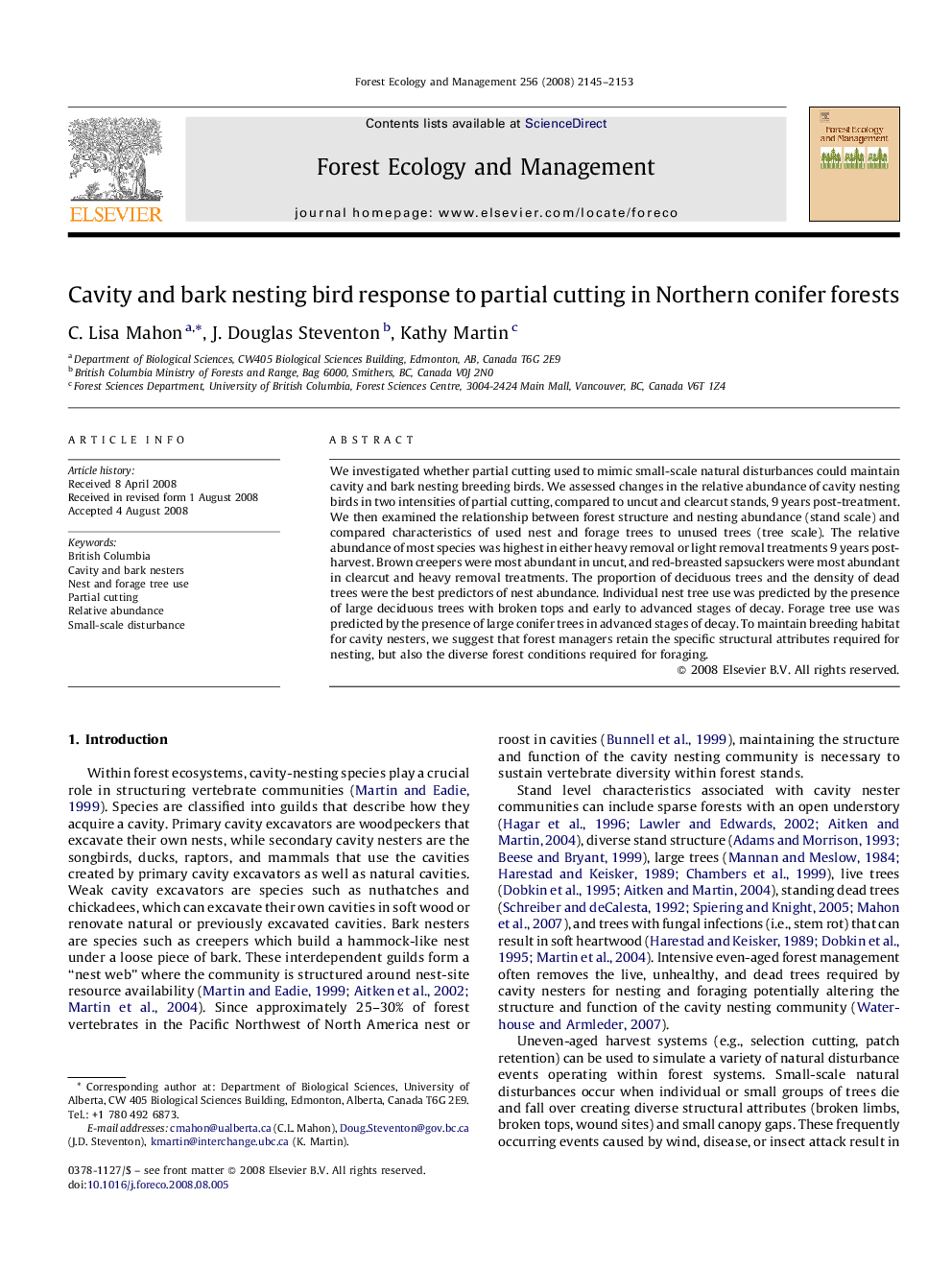| Article ID | Journal | Published Year | Pages | File Type |
|---|---|---|---|---|
| 89253 | Forest Ecology and Management | 2008 | 9 Pages |
We investigated whether partial cutting used to mimic small-scale natural disturbances could maintain cavity and bark nesting breeding birds. We assessed changes in the relative abundance of cavity nesting birds in two intensities of partial cutting, compared to uncut and clearcut stands, 9 years post-treatment. We then examined the relationship between forest structure and nesting abundance (stand scale) and compared characteristics of used nest and forage trees to unused trees (tree scale). The relative abundance of most species was highest in either heavy removal or light removal treatments 9 years post-harvest. Brown creepers were most abundant in uncut, and red-breasted sapsuckers were most abundant in clearcut and heavy removal treatments. The proportion of deciduous trees and the density of dead trees were the best predictors of nest abundance. Individual nest tree use was predicted by the presence of large deciduous trees with broken tops and early to advanced stages of decay. Forage tree use was predicted by the presence of large conifer trees in advanced stages of decay. To maintain breeding habitat for cavity nesters, we suggest that forest managers retain the specific structural attributes required for nesting, but also the diverse forest conditions required for foraging.
